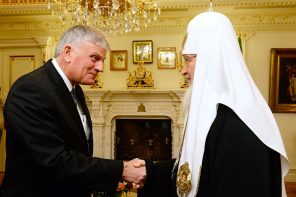As an Asian Christian who teaches at a Christian college in Massachusetts and has worn the shalwar kameez as my “duty uniform,” for more than twenty-five years I took bemused note of recent headlines regarding a “hijab-wearing Christian professor.”
For centuries men and women have worn variations of this outfit—a long tunic, loose baggy bottoms, and a scarf—all across the region from North Africa to South Asia. I wear it for free movement of my female body.
Although Wheaton’s censure of professor Larycia Hawkins was not directly tied to her choice to wear the hijab, the gesture does have a powerful significance. The hijab has been animated with a life of its own, representing the source and object of widespread collective anxiety—a totem of our amorphous social angst.
And U.S. evangelical institutions are feeling particularly vulnerable.
The professor’s stance to enter into solidarity with others is not unlike what many Christians resolve to do as they enter the period of Lent. They engage in penitential practices in the movement towards commemorating Christ’s resurrection. For Advent, Hawkins entered into contemplative practice by focusing on the meaning of a savior born under siege, and she considered what form divine incarnation would take amidst the morass of terrorism, refugees, and islamophobia today. Hawkins seemed burdened with the impotence of facile rhetoric. She said that people of faith would have to move past talk of “theoretical solidarity” and undertake the long march towards “embodied solidarity.”
Hawkins seemed burdened with the impotence of facile rhetoric. She said that people of faith would have to move past talk of “theoretical solidarity” and undertake the long march towards “embodied solidarity.”
As Hawkins wrote:
I stand in human solidarity with my Muslim neighbor because we are formed of the same primordial clay, descendants of the same cradle of humankind–a cave in Sterkfontein, South Africa that I had the privilege to descend into to plumb the depths of our common humanity in 2014.
But perhaps such a call from the gospel was too daunting for the custodians of religious, racial and political purity at Wheaton College. The easy bedding of white American evangelicals with the U.S. state would make it difficult for them to see Hawkins—the college’s first tenured African-American professor—as anyone but a transgressor of the American evangelical church-state complex.
Sadly, one can only conclude that the sanctions against Hawkins have little to do with any serious concerns for Christian orthodoxy but rather show a deep fear among evangelicals that faith in Christ might lead the believer to encounter the radical humanity of others outside the fold, Islamic or not.
How could it have been any other way?
I would argue that evangelicals have been part of a longstanding contract with the state in which Christ and country are mutually embedded. An academic institution such as Wheaton College taking on the role of the church ex cathedra is an illustration of such blurred missions.
Wheaton appears, in this context, as a small business enterprise drawing on particular cultural markings to fortify its brand. Clearly Prof. Hawkins is a liability in Wheaton’s promotion of its product. In the end, the college seems willing to jettison the discomfort of the gospel message.




